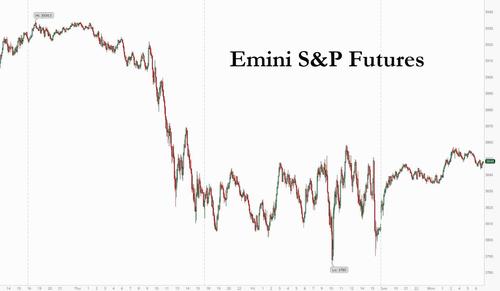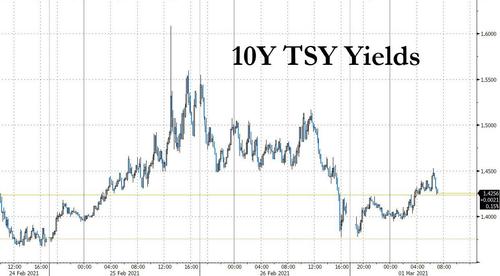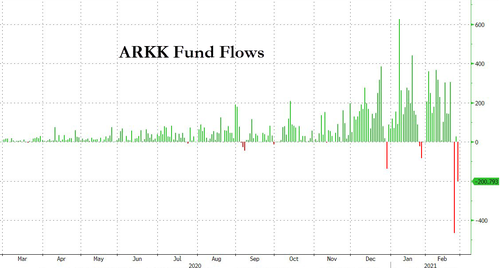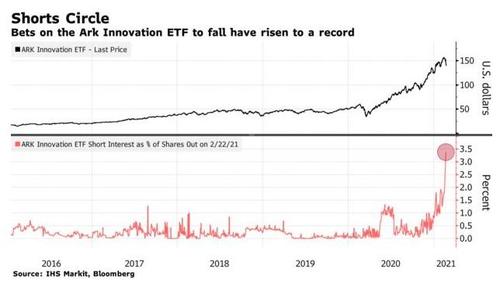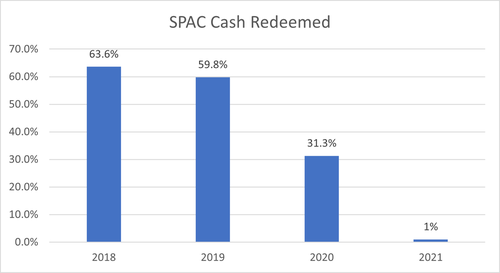Why did prescription opioids bring so much misery to the small towns of postindustrial America?
The standard narrative puts the blame on OxyContin, a powerful painkiller supposedly pushed on rural Americans by the profiteers at Purdue Pharma, which ended up filing for bankruptcy and settling criminal charges with the federal government for $8.3 billion. In this telling, the opioid epidemic is a morality tale of capitalism run amok and regulations made toothless by anti-government zealots.
Sally Satel, a practicing psychiatrist who works at a meth-adone clinic in Washington, D.C., has a more complicated story to tell. In 2018, she moved to Ironton, Ohio, an economically depressed town in Appalachia, where she worked with patients and social service providers. Satel doesn’t stint on criticism of drug makers, but she says that the opioid crisis is an outgrowth of a century-old tradition of medicating pain as a way of tending to the broken bodies of the region’s laborers.
She stresses that when Purdue’s sales force came to small towns in Appalachia, it was “pushing on an open door.” While there’s no question that OxyContin was a particularly potent painkiller whose potential for abuse was criminally downplayed by its makers, it was merely the latest in a long line of legal and illegal substances used by people in the region to ease physical and psychological suffering. That’s one of the reasons that, even after OxyContin was reformulated to reduce abuse and opioid prescriptions declined, overdoses and dysfunction are still commonplace.
Satel also challenges conventional theories of addiction that characterize it as a disease like diabetes or Alzheimer’s. Substance abuse, she says, derives from both inborn predilections and a person’s environment, or what she calls “dark genies” and “dark horizons.” Satel stresses that the best way forward is to give individuals tools to make better use decisions while improving their chances to live lives with open-ended futures.
Satel is a resident scholar at the American Enterprise Institute and co-author of the 2013 book Brainwashed: The Seductive Appeal of Mindless Neuroscience, among other works. She spoke with Reason‘s Nick Gillespie via Zoom in late December.
Reason: What drew you to rural Ohio, and how long did you stay?
Satel: I was there for a year. I became the only psychiatrist in Lawrence County in southern Ohio. I worked in a clinic, and I ran a group with a wonderful seasoned social worker. I saw patients and found, not to my surprise, that addiction is addiction.
In the inner city, the drug that was available was heroin and, increasingly, fentanyl. By the time I got to Appalachia, heroin had already moved in, but pills still had a presence. There has always been a pill problem in rural America and especially in central Appalachia, where coal mining was huge.
Many people, when they talk about the opioid epidemic in Appalachia, start the clock in 1996, which is when OxyContin was introduced. OxyContin is a long-acting form of oxycodone, which is the actual opioid. But a lot predates that. There had been trafficking of prescription pills for a long time, mainly Percocet, Lortab, Vicodin—all of those are preparations of oxycodone and hydrocodone. They’ve been very, very popular, and doctors had a fairly low threshold for prescribing them.
OxyContin is extremely potent because it’s long-acting. The pill has a lot of oxycodone in it. For example, your average Percocet is 5 to 10 milligrams of oxycodone, but an OxyContin pill can have up to 80 milligrams. The immediate-release pills—the Vicodins and Percocets—are designed to last between three and six hours. If you’re dealing with acute pain, that’s usually fine. Most people never needed the 30-day [supply] they were given for their tooth extraction or whatever. The appeal of OxyContin is that it was long-acting, so that if you had severe or moderate chronic pain, you had a more steady blood level. You wouldn’t have almost mini-withdrawals in between doses. That is a pharmacologically legitimate strategy.
When you chop it up and either snort it or mix it with water and inject it, you’re getting an enormous rush. It’s pharmaceutical grade, so it’s safe in terms of no impurities. But of course, if you don’t have tolerance, it’s not safe, and you can overdose on that.
What were people being prescribed pain pills for?
Any blue-collar area is going to have a lot of hard-labor jobs. Coal mining is just brutal. Of course, that’s not a dominant industry there any longer, but coal mining was unbearably brutal and dangerous. In the 1920s and ’30s, many men lived in coal camps, which were owned by the mining companies. The coal camp doctor, who was employed by the company, had to get them into the mines. They medicated them so that they could work. This culture of prescribing for non-cancer chronic pain was endemic to the region even after coal mining disappeared.
What’s it like now?
You had communities that were economically imperiled, because there had been a deindustrialization due to globalization or automation. In Ironton, there were jobs; they were just low-paying jobs. There was a great out-migration of what would have been the middle and upper classes, so you’re left with a hollowed-out community. The social service layer was huge. Hospitals are often the major employer in these areas. There’s a whole layer of people who are struggling, a whole miasma of hopelessness. The drug companies did target Appalachia, and also northern Maine in the Northeast, because they’d been selling there for so long. The drug reps were pushing on an open door.
Most people who are prescribed these drugs use them uneventfully, and that’s the end of it. They don’t even finish their prescriptions. But there’s a problem that they then put the extra in the medicine cabinet, and those end up getting in the wrong hands.
One of the most pernicious myths of the opioid epidemic is that of the accidental addict. The idea that you go to the doctor and he gives you an opioid—not necessarily OxyContin. Only 4 percent of all prescriptions for pain were written for OxyContin, although they were always preferred by people who abused pills.
Overwhelmingly, studies will show that fewer than 1 percent [of users with prescriptions become addicted] is a common finding. You find some that are about 8 percent. The meta-analyses that separated out studies that exclude patients with a history of addiction, or a concurrent problem with depression or anxiety, found these rates of under 1 percent. Patients who are vulnerable are those with a history of addiction, history of alcoholism, or a concurrent problem with either a psychiatric diagnosis or a severe existential problem. You can imagine getting in an accident, having a completely otherwise normal psychiatric history, but the accident is devastating. You’ve lost your job. You’ve lost function. It’s a deeply depressing and demoralizing and terrifying state, and these drugs are not only good for physical pain, they’re excellent for psychic pain. Those are the folks who are vulnerable. Those are the folks we have to watch.
You’ve found that the bigger problem is with people who were never prescribed these drugs.
Much more often, they’re abused by people who were never prescribed them at all. There is a nice graphic from a government agency showing that only 22 percent who misused prescription painkillers got them from a doctor. The average person who abuses these medications knows what they’re doing. I ran a group with this wonderful social worker named John, a real Santa Claus of a guy and very seasoned. We’d sit in the group, and sometimes the patients would say, “Well, I wouldn’t have gotten in trouble with OxyContin if my doctor didn’t prescribe it for me.” John would lay back in his seat and say, “I get it. You mean the doctor wrote a prescription that said, ‘OxyContin, 40 milligrams, twice a day, chop and snort.’ Is that what he wrote?” The folks in the room would laugh. What you really find is that most people who abused prescription medications had abused other drugs before that, and they abused other drugs with their medication.
When you look at toxicology screens of people who have overdosed and died, you rarely find one drug in there. You find alcohol, or Valium-type drugs, benzodiazepines, cocaine, other depressants, which are together more dangerous than either alone.
The truth about addiction is that people seek whatever it is they seek. When your life eventually strikes you as unlivable, these drugs become what I call obliviants. I mean, we call cocaine stimulants and alcohol depressants, but opioids are obliviants. They can numb you. They can make all kinds of distress bearable.
You found there were strong, informal folkways about what drugs were around and how to use them.
Drug information often passes from person to person. It’s very grassroots. Before OxyContin, people in Appalachia would chop up Tylox, which is Tylenol and oxycodone. Before that, it was Vicodin. It was other pills—Valiums and Xanaxes. They would be traded for goods or services. But OxyContin became an extremely potent kind of currency.
There had always been doctors that were very free with prescriptions. By no means were all of them lazy Dr. Feelgoods who just wanted cash. I spoke to about 16 physicians who were all in their 60s and 70s, so they really saw the evolution of this problem. They knew that some of their patients would be selling the drugs to make rent or because their husband had just lost his job. They didn’t like doing it, but they felt sympathy for these folks. They also knew that there was no pain program to send them to.
How did Medicare and Medicaid help fuel the problem?
OxyContin is quite expensive. It’s not generic, and neither were other long-term opioids. They’re still on patent and they’re quite expensive, but because Medicare paid for it, there was really little motivation for doctors to think twice about [the cost to the patient]. The copayment was almost nothing. Then when you turn around and you can make a dollar a milligram, you can make an enormous amount of money on this.
OxyContin and other prescription pills were vilified to the point where prescriptions for them declined. How did heroin and fentanyl come in to fill the void?
Pill prescribing peaked around 2010–2011. OxyContin was reformulated so it couldn’t be chopped up. Pill mills were really clamped down on, and prescription monitoring programs became more stringent. Doctors were getting much wiser to the fact that we were over-prescribing.
As pills became less available to people who abused them, heroin was there. You start to see the rise of heroin in 2010. It was always waiting in the wings. People will use what’s available and what’s inexpensive, and that was heroin. Around 2014, you can see just a sweep up into the stratosphere of deaths that are attributable to fentanyl, which is about 100 times as powerful as morphine. If you have a surgery, when you wake up with a drip in your arm that you get to actually control through a button, it’s likely going to be fentanyl—it’s excellent. And fentanyl patches are extremely effective. It’s long-acting, so people would cut them out [of the bandage]. If you’re interested in abuse, you don’t want something long-acting. You want something short-acting. You could slice open the fentanyl and suck it out.
That’s a sign of desperation. People would dive into dumpsters outside of nursing homes, and there was that whole culture of if your loved one died of cancer, don’t mention that in the obituary because that’ll put a red flag on your house that you’ve got a lot of pills there.
What are the specific numbers involved for regular users?
About 2 million people are estimated to use, abuse, or misuse pills. It is so hard to get a measure of heroin. It’ll be maybe half a million or less when you look at government statistics. I don’t think there has been an increase in people using opioids for the past few years; it’s more of an overdose phenomenon, because the drug used now, fentanyl, is just so powerful.
Is there actually more despair in various parts of the country than there was 50 or 100 years ago? Or are deaths increasing because we have access to more powerful drugs that might kill us?
That’s too difficult to answer. Suicides are going up. A death is a death, and coroners could still make mistakes about identifying suicides, but it’s a little more clear than arguing over whether there’s more depression or not, because now people are culturally more comfortable with coming forward.
More people are dying at their own hands. It might be that the mode of self-medication is more dangerous, but it also does seem that more people are looking to escape.
Some of my patients were young people who were fourth-generation [substance abusers], where the grandfather or the great-grandfather lost the job at the factory in the ’60s. He always drank too much and maybe was a little rough with the wife. When he lost it, he started drinking more, and domestic violence really became an issue. By the fourth generation, there’s too much dysfunction handed down for too long, and you’ve got people who are not well-educated and don’t see much promise.
You have families that don’t work. That kind of discipline is not internalized of having to be somewhere, of being responsible. How to delay gratification, how to control impulses, how to develop trust, how to have relationships—that kind of development really gets derailed. You have people with a triple whammy: They live in environments where the boredom is crushing, their future doesn’t look very bright, and they don’t have these inner strengths. It’s easy to understand why these substances have appeal.
You’ve written that you are “hesitant to call addiction a disease,” especially a “disease of the brain.” Yet addiction, or at least serious substance abuse, seems to be at or near the center of the opioid epidemic.
I prefer calling addiction a symptom rather than a disease. I’m not going to argue with someone, especially someone in recovery, who conceptualizes their problem as a disease. Whatever works for them. But from a conceptual standpoint, I do have a significant problem with the disease model, especially with the formulation of brain disease.
This is something that the National Institutes of Health has been pushing since 1995. I understand why that has appeal, because the more you medicalize something, the theory goes, the more you take it out of the realm of the criminal justice arena, the less you think in terms of punitive responses, and the more you think about therapy and funding for treatment and funding for research. It’s an anti-stigma kind of strategy. I appreciate that and I like those ends. I just don’t feel that they’re accomplished well by reducing one of the most complex behaviors to a slice of brain tissue. I’m not going to deny any of the neurobiological facts or the very dramatic and eye-catching brain scans that they use—of course the brain has changed in addiction. So that’s all true. But the point is the brain isn’t changed to the point where a person can no longer make decisions.
If my choices are saying addiction is a disease vs. it’s a sin or it’s a crime or it’s evidence of moral failing, well, damn, I’m going to pick disease. But it’s a condition, a behavioral phenomenon that responds to contingencies, that responds to consequences, and that people engage in for -reasons.
In Ironton and D.C., there’s not one patient who walked into a clinic and didn’t say that they were there because their wife was going to leave them, their boss is going to fire them, their probation officer is going to punish them, or their kid’s going to hate them. The point is they’re responding to something in their environment. If I had Alzheimer’s disease, which is to me a classic brain pathology, it wouldn’t matter what was going on in the environment or in my cognition or in my view of myself.
If you talk to someone who drinks too much or uses drugs too much—and I emphasize the too much, because that’s the problem—I’d say to them, “Why are you doing that? What’s going on?” That question makes sense. That question can be answered in existential terms. If I said to a person with Alzheimer’s disease, “Why do you have Alzheimer’s disease?” maybe they’ll talk to me about [brain] plaques and tangles and neural pathology. The answer doesn’t come in the form of existential language. That’s very important, because that goes to why people use and how we get them out of it.
The vast majority of pill abusers were not prescribed the medication by their physicians. Instead, they were mostly individuals who were already involved with drugs or alcohol. OxyContin, fentanyl, and heroin are all powerful drugs, but their use is building on an existing problem. How does that insight influence treatment?
Most people stop on their own, which is another thing that is not well known. Start with a hundred people who just try heroin or cocaine for the first time. Half of them are going to just go, “What’s the big deal?” A smaller fraction of the other half is going to say, “Wow, this is really good.” What is it about one person’s brain that finds this drug more rewarding than the other person?
Let’s focus on the group that found it rewarding, intensely pleasurable. They say, “That was really good. Give me more.” Some of them are going to go home and the spouse is going to say, “Where the hell were you? What’s happening to the money? Why didn’t you come to Timmy’s baseball game?” They’re going to say, “Oh, wait a minute, wait a minute. What am I doing?” They stop, and that’s the end of it.
You get a smaller and smaller population of people who think, “You know, this is costing me, but I’m so unhappy that this kind of relief, which was great at the beginning and has now cost me a lot, is still worth it.” You have a person who has basically two layers of anguish. First, they have that genie that made drugs attractive to them in the first place, so that was always a baseline misery. Now they have a second layer that they’ve accrued: Maybe they’ve gotten hepatitis, maybe they’ve lost their job, maybe their wife is going to divorce them, maybe they just hate themselves because of all the people they’ve disappointed, and that makes the drugs even more appealing.
It’s a very, very hard cycle to stop, but there’s the example of the woman I met in Ironton and I wrote about. She ran out of pills, really wanted them, went to her friend’s house because she thought her friend would give her some. The friend wasn’t there, but her gross boyfriend was. He said, “I’ll give you those pills.” The young woman was already starting to develop withdrawal symptoms. If you want to talk about brain scans, her brain was probably on fire at that moment, and the guy said, “Here are the pills, but I’m going to expect something from you.” And that was an unsavory act.
The woman got help the next day. Some people don’t even get help. They just stop the next day, and you can’t really predict who’s going to respond to what.
I’ve seen people who come in and you think, “My God, haven’t you hit bottom enough?” Yet it’s that next time that does it. The problem with fentanyl is it’s very dangerous to keep waiting for that next time. That’s where harm reduction comes in, with Narcan [a drug that reverses opioid overdoses], where you can at least keep people alive until they make a decision or until they’re arrested. I have to say that coerced [court-ordered] treatment can work. The addicts ultimately have to internalize the values of the treatment system, because it’s not like pneumonia, where you can be in a coma and I can give you a penicillin IV and you’ll wake up cured. You have to be motivated, but that motivation can actually come to people even when they’re in a coerced setting.
You’re an M.D. and a psychiatrist. Over the past 30 or 40 years, do you think we’ve made progress in understanding and treating addiction?
The more we medicalize this problem, the more we’re going to be misled, the more we’re going to put emphasis on medications—the methadones, the buprenorphines, the naltrexones. I’m all in favor of those medications, because they help people stand still. If you’re craving, you’re never going to make the first step toward stopping. I’m all for the medications, but to think that could possibly be enough strikes me as incredibly naive. The National Institute on Drug Abuse, ironically and to its credit, funds lots of [treatment] research, but they don’t talk about that. Instead, they show brain scans and talk about addiction as “a disease like any other,” which of course it’s not. When you go to a place like Ironton, you can see how medicine and even public health are necessary but not at all sufficient. What do you do when you finally do get somebody sober but they’re in an environment that doesn’t appear to offer much?
There are lots of different crosscurrents here. Maybe because the pill problem is mainly a white problem, it has been treated with more understanding and compassion and seen in a broader light as a response to circumstances. That’s a positive thing, but it goes beyond medicine. People drop out of treatment at enormous rates. Fewer than 60 percent will still be in a treatment program at the end of the year. I can tell you that very few people came into our methadone clinic and were able to be just fine with their first or second or third dose of methadone. If your problem was simply withdrawal, if it was simply physiological instability, then we should have been able to fix you with a medication. Of course, we didn’t, but we helped you stand still, and if you were motivated, we could really help you.
Talk a bit more about the perils of medicalizing behaviors.
I have two thoughts: The first is that it can be problematic even in the clinic, let alone in society more broadly. I worked in an urgent care clinic in D.C. It was connected with the criminal justice system, and I would see people who were awaiting trial. The judge would say, “Well, we sent him to you because he cried” or “We sent him to you because he was once on a medication in jail.” So many were not happy people—they had a lot of problems with making good decisions and with controlling their impulses—but they weren’t mentally ill in a classic way, and they weren’t people who were going to be responsive to medication. They needed help, but not in the domain of psychiatry.
The second thing is that we don’t medicalize some problems enough. We’ve underserved and ignored people with schizophrenia, and that is a huge blight on our society. Rikers Island and L.A. County Jail and Cook County Jail are the biggest psychiatric facilities in the country. We criminalize severely mentally ill people. On the one hand, we over-medicalize, and on the other, we have people with real brain diseases and we don’t pay enough attention to them.
Do you think we’ve become more psychologically sophisticated or astute as a society over the past half-century?
I think in terms of people who have the wherewithal or the financial means to do creative things with psychedelics, that’s a very interesting development. I don’t mean they should run off and experiment on their own at all, but research into that is so important. But there’s also a lot of unhelpful pop psychology, which is the whole field of trauma. I don’t want to diminish the life-altering impact of child abuse and devastating things that happen to people, but people are looking for explanatory systems and exoneration. The trauma field, which consists of the most brilliant psychiatrists and psychologists I know and the most two-bit counselors, is often reduced to a system of: This happened to you, it’s horrible, and it’s ruined your life. You can’t do anything about it, and you should forever stew in the resentment of what was done to you.
Have we become too dependent on pills?
I’m not blaming pharmaceutical companies, God bless them. They make wonderful, life-saving medications for many people. But a lot of the time the message looks like, “If I just had this pill, everything would be fine.” Sometimes, a pill does make a massive difference, but usually so much other work needs to be done as well that the fantasy of a magic bullet doesn’t help.
This interview has been edited for clarity and style. To listen to the full version, subscribe to The Reason Interview With Nick Gillespie.

from Latest – Reason.com https://ift.tt/3kzAOzk
via IFTTT



